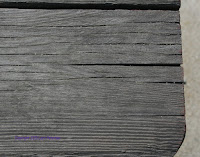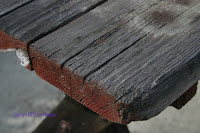ACRYLIC
FALL 2015 CLASS Project: Cool Refuge Week 5
This
week we worked on under painting some of the plants and more dry brush on our
chair. I am hoping that we can finish this up at our next class so please try
to have you painting to this stage when we meet again.
I
started in the background cleaning up my windows and adding a bit of detail.
Using blue, a touch of purple and sienna and white to make a medium blue gray,
I used that color to fill in my windows and to clean up and shape the edges of
the frame of the window panes. While that was wet, I added some more white to
the color to lighten it then suggested curtains in the window. Remember that
the fabric of the curtains will fall vertically, if you suggest that the
curtains are tied back, they will curve to where they are tied then fall
straight down. Please look at curtains BEFORE you do this, you really need to
know how they will fall.
I
added plants to the planter and some vines hanging down over the door, using my
Hooker’s green and a bit of blue and a touch of orange adding yellow as I put
them in.
Using
the corner of my brush (you can use either a bristle brush or a flat sable) I
quickly put in my plants with a series of OVERLAPPING dots. The overlapping
part seems to throw most of you because when I come around I see: Dot. Dot.
Dot. – all lined up and evenly
spaced. You want more of a shotgun effect: doDotOTdoTDodtot – so that your
strokes are on top of each other. Pick up yellow along the way and lightly
blend it in using these overlapping dots. Also create interesting edges so they
are not all lined up and even like topiary. If you put in the vines going up
the window or over the door remember they are fatter where they attach to the
plant and thinner to the ends as well as being irregular in shape, you don’t
want them looking like garland.
The
same applies when you do the plant under the chair. It is a mass of color first
then later you can sort out some detail. Use the same colors but add a bit more
blue to the green when you need it darker and yellow to make it lighter. The
plants on the ground are coming up through the cracks in the walkway so again,
please don’t make this into a shapeless lump.
On
the chair there seemed to be problems with getting the back of the chair dark
enough, it isn’t black dark but it is darker than the front of the chair especially
the left side where the arm and leg overlap the back of the chair. You may need
to fix both parts of the chair using the dry brush technique to add texture as
well as either dark color to the back of the chair or lighter, warmer colors to
the front. If you squint at the chair you should be able to see separation of
the colors.
I
know I have said it many times before, but if you want to be a better painter
you need to learn to draw. Some artists take months of research for a future
painting by gathering photos and doing sketches and thumbnails long before they
ever start on their masterpiece. With all that preparation it usually does turn
out to be a masterpiece. I have asked you, and
even taken time in class for you
to practice a new or difficult technique before you try it out on your
paintings, about half go straight to their painting and of those who actually
do take more than a minute to get the feel of the brush and paint, I would say half
of those only practiced for a minute or two before going to their paintings. I
can see who practiced and who didn’t. It does make a difference, just as
drawing a simple sketch can help you understand what you are looking at. The
sketch I did below took all of maybe 10 minutes but it lets me see detail in
the wood I may not understand in my painting but when I get to the ends of the
chair parts, I know what to expect. This is important and I don’t know how to
convey that message so you will understand, just give it a try for a few months
and see if you paintings don’t improve, you might just surprise yourself.
Do
as much as you can to get to where I am in the painting, I really don’t want to
take more than another class to finish this. keep painting and I will see you
in class.












